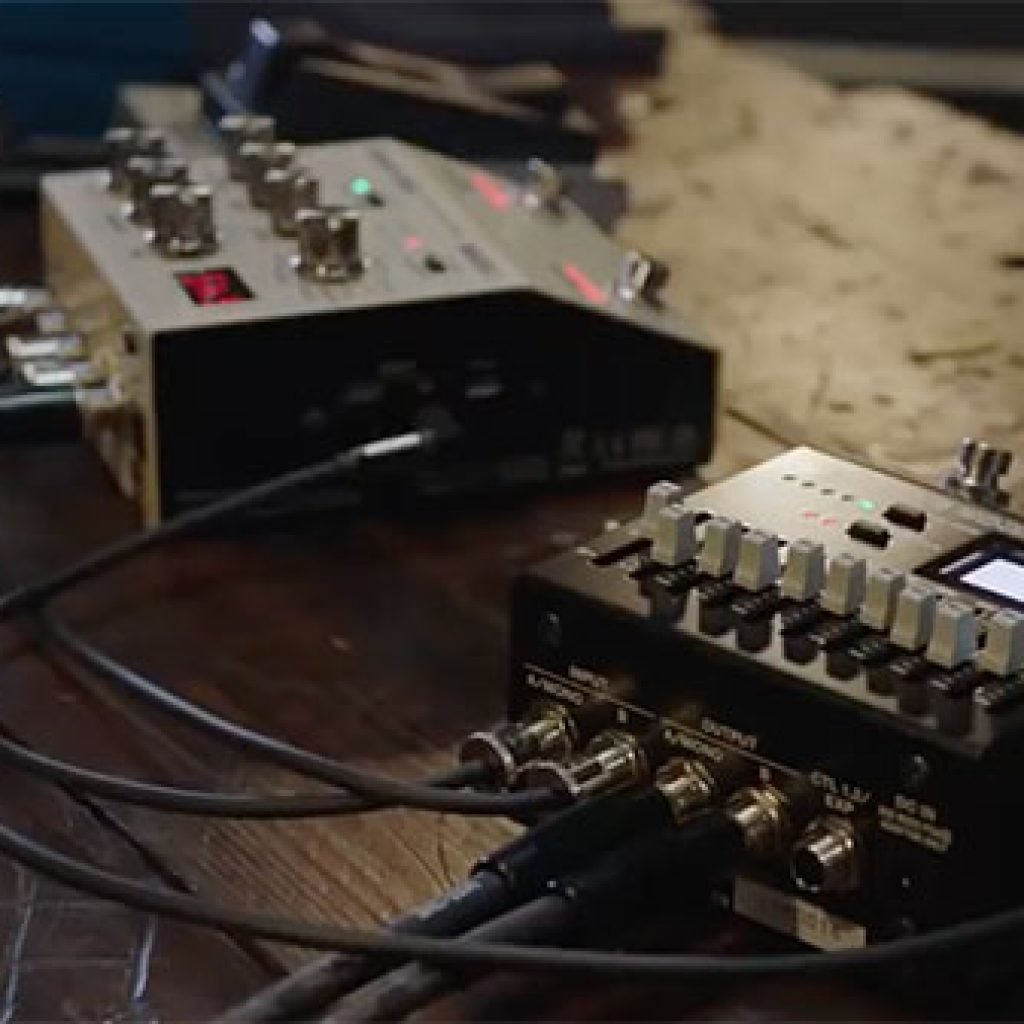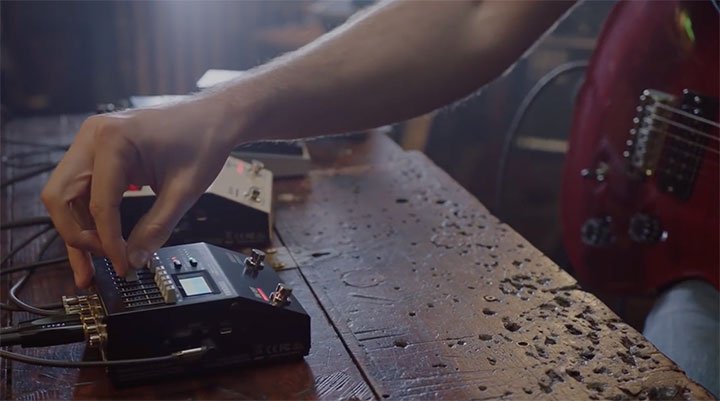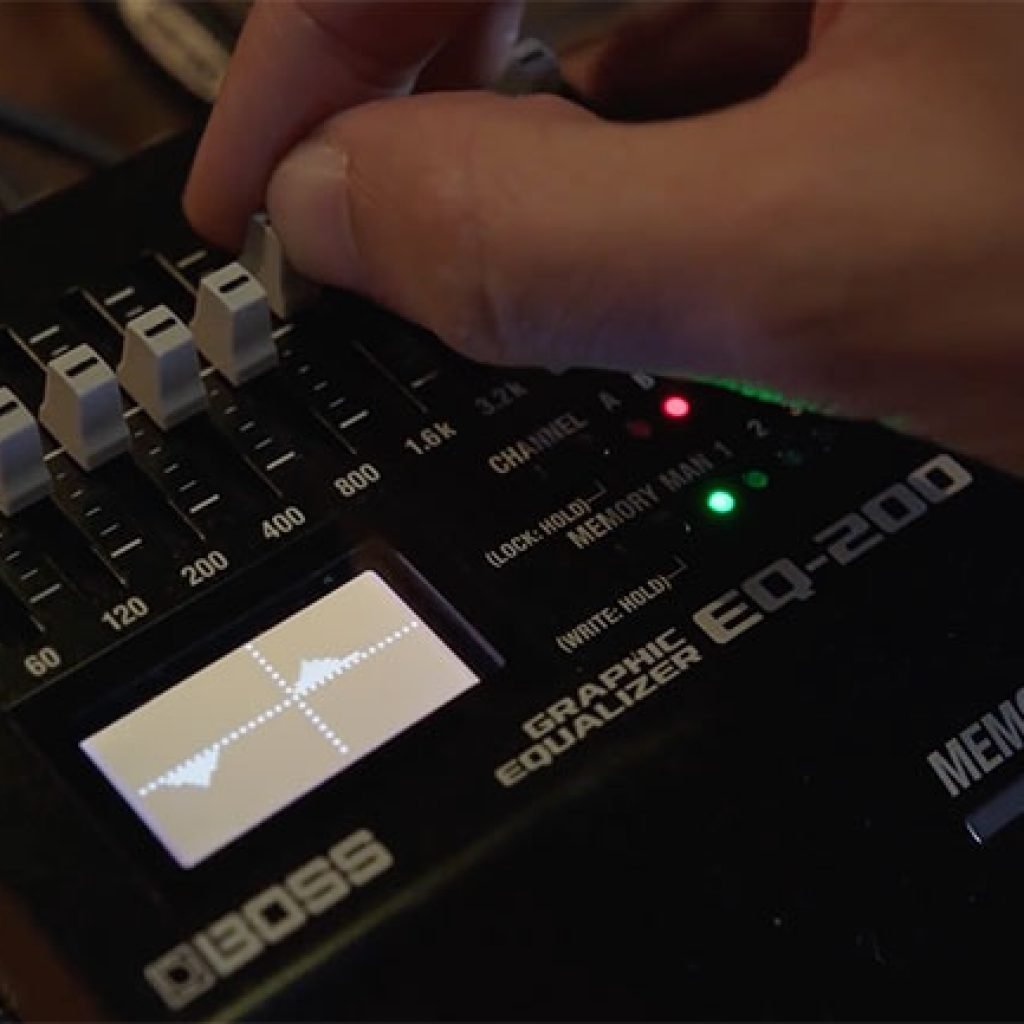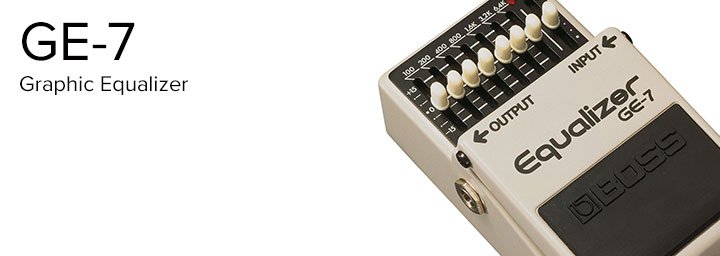On the face of it, an EQ pedal may seem pretty redundant – it technically doesn’t make any sound in and of itself, and you already have EQ controls on your amp, right? But used correctly, an EQ pedal can be one of THE most important secret weapons in your tonal arsenal. Let’s find out how an EQ pedal can help you take your tone to the next level!
WHAT DOES AN EQ PEDAL DO? 2 MINUTE CRASH COURSE
Those 10 bands of numbers might look intimidating, but all you need to know is this: (*note – yes, we know that every sound engineer may differ on where exactly these divisions happen, but just bear with us for the sake of discussion)
- 30Hz to 200Hz -> BASS frequencies
- 200Hz to 800Hz -> MID frequencies
- 800Hz to 12.8kHz -> TREBLE frequencies
Easy! Just like on your guitar amplifier. But as you can see already, instead of just having one knob for bass, mids or treble, a graphic EQ pedal gives you much more control within each frequency range. And the cool thing is that when you move the sliders around, the screen updates in real time to show you what the EQ curve is looking like!
At the end of all the frequency sliders you’ll see a Level control, which means that once you’re done boosting or cutting specific frequencies, you can also take the whole spectrum and either push the overall level up or down depending on your application.
WHERE TO PLACE THE EQ PEDAL IN YOUR SIGNAL CHAIN

Placement is key with an EQ pedal, and you can use it a number of different ways.
If you place the EQ pedal in front of your amp, it will have more of an effect on the response of your amp (same as turning the volume down on your guitar knob, or using a different boost pedal).
If you place the EQ pedal in the effects loop of your amp, it functions like a post-EQ in the studio, allowing you tweak and fine-tune your overall tone.
Running an EQ both before your amp AND in the loop can give you MASSIVE tonal options – and with the stereo in/out routing on the EQ-200, you can do exactly that but without needing two separate pedals!
4 WAYS TO USE AN EQ PEDAL
So now that we know conceptually how an EQ pedal works, how can we use it in the real world?

AS A SUPER VERSATILE BOOSTER
High gain amps usually have a lot of lows and highs on tap, which means that if you run them too hot, the low end can get mushy/fuzzy while the high end may end up being too shrill.
You probably already know that one of the most universal methods of tightening up your sound is to run an SD-1 or a TS-type pedal in front of the amp, with the drive set very low, and the level set high. These types of pedals have a strong midrange “hump”, while pulling back slightly in the bass and treble frequencies. The result is tighter palm mutes, better note articulation, and enough midrange to punch through the mix.
An EQ pedal can be used in the exact same way, but with a lot more ability to really zero in on the perfect frequencies to complement your amp.
For example, the infamous TS mid hump lives somewhere in the 600-800Hz region, depending on where you set the Tone control. Furthermore, every pedal builder making a TS-variant will have some secret spice of where they place that frequency centre, giving each variant a slightly different flavour of boost.
Using the EQ-200 we can quickly dial in the classic mid hump by boosting the 800Hz slider (and don’t forget to build a smooth curve on screen using the adjacent frequencies) while pulling back the bass and treble frequencies.
If the bass is still too flubby, you can easily dial a little bit more out of the signal. If you need a bit more of those singing upper mids, you can choose to centre the hump more around the 1.6kHz band, which would be outside of the capabilities of most TS pedals. Bump the level up a fair bit to naturally drive the front end of the amp and you’ve got yourself a killer high gain tone.
It’s easy to see how this concept can be extended to imitate almost any type of boost pedal – flatten the mids for a more “transparent” style boost, or accentuate the highs to act like a treble booster.
So as you can see, an EQ pedal can act as a much more precise, configurable and versatile boost pedal.
TO ADD AN EXTRA CHANNEL TO YOUR AMP
If you own a non-master volume amp like a Plexi, chances are that you LOVE the tone of your amp when it’s cranked and the power section is really cooking.
However, the compromise that you make by using this kind of classic amp design is you basically don’t have a clean channel. Rolling back your guitar volume will get you some of the way there, but in general you’ll never be able to attain that sparkling American clean that most people know and love.
Unless you’ve got an EQ pedal! In this scenario, you’re running your EQ pedal into the front of the amp.
The first step of course is dialling down the Level control so that you’re no longer hitting the front end of the amp as hard. This will clean up your tone similar to using your guitar volume, except that it’s consistently repeatable every single time, so your “clean channel” will always be the same relative volume to your full blown drive sound.
The next step is to cut some mids out. British amp designs are brimming with mid frequencies, while classic American designs have a much more mid scooped sound profile. The biggest difference in the mids between these two types of amps lies around the 600-700Hz region. So if you scoop these out using the 400Hz and 800Hz sliders (remember to try and form a smooth curve with the adjacent bands), you’ll start to hear that distinctive scooped twang that you’re looking for.
You can add sparkle and presence using the high frequencies, and tweak bottom end to taste, depending on how you’ve set your amp.
It’s really that easy!
Or if you’ve got an amp that has two channels but lacks a solo boost, an EQ pedal in the effects loop can easily give you the required volume kick, as well as allowing you to boost the mids to really cut through the mix effectively.
AS AN EFFECT
You’ve definitely heard the “radio tone” lo-fi effect used on countless intro or bridge sections of songs, like the the intro of I Believe In A Thing Called Love by The Darkness. Of course, on the recording this effect is created in the studio – but with an EQ pedal, you can replicate this for live performance to add that extra touch of dynamics to your show!
The lo-fi effect basically imitates the sound of an old ‘50s radio, whose small speakers basically had hardly any low end, and were mostly just upper mids and certain treble frequencies (they weren’t particularly efficient or full range speakers).
So, grab all the low end frequencies up to around 200Hz and pull them down completely. Now, experiment with using the remaining mid and treble sliders to create a “spiky” looking EQ curve. As a starting point, pull down 400Hz, 1.6kHz and 12.8kHz about half way, while boosting up 800Hz and 3.2kHz half way.
In this scenario, the EQ pedal should be in your effects loop – which means that we’re taking the overall tone and applying the EQ on top of it (as opposed to running into the front which changes the response of the amp more drastically).
TO BALANCE YOUR GUITAR OUTPUTS
If you run both single coil and humbucker guitars, you’ll be keenly aware of the big difference in output between the two.
The thick, sustaining tone that you’ve dialled in with your humbuckers could turn to thin, weedy clang when you switch to single coils.
In a perfect world, you’d dial in the optimum amp settings for each different guitar whenever you switch, but in practice that’s usually not possible.

The EQ pedal rides to the rescue again! In this scenario the EQ pedal would be placed in front of the amp.
Not only can you use the Level control to bump up the volume of your single coils, but you can go one step further and increase the mids going into the front end of the amp so that your amp gain structure is “seeing” a similar level and sound profile going into it. And vice versa if you’re going from humbuckers to single coils.
With the saveable presets on the EQ-200 (recently upgraded to allow a whopping 128 presets with MIDI recall), consistent tone is just a footswitch away!
FINAL WORD
An EQ pedal might not seem like the most exciting pedal in the world, but it’s actually a REALLY powerful tone-shaping tool. If you’ve never tried one, you definitely should – it could help you take your tone to the next level!





